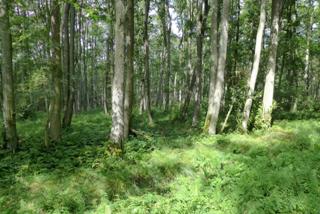Jul 29 2015
Climate change, environmental pollution or land use changes - there are numerous influences threatening biodiversity in forests around the globe. The resulting decrease in biodiversity is a matter of common knowledge today - amongst scientists as well as amongst the general public.
 A new study has analysed the biodiversity in forests of the temperate zone of Europe. The scientists found out that -- on average - the biodiversity in the herb layer has not changed in recent decades. Credit: Photo: Markus Bernhardt-Roemermann/FSU Jena
A new study has analysed the biodiversity in forests of the temperate zone of Europe. The scientists found out that -- on average - the biodiversity in the herb layer has not changed in recent decades. Credit: Photo: Markus Bernhardt-Roemermann/FSU Jena
But this is a simplified view, says Dr. Markus Bernhardt-Roemermann of the Friedrich Schiller University Jena (Germany). "At least a trend like this doesn't apply to all forests on the local scale." This is the result of a new study by the Jena ecologist and co-authors which is published today (27th July) in the scientific journal Global Change Biology (DOI: 10.1111/gcb.12993).
Together with an international team of scientists from all over Europe, Bernhardt-Roemermann comprehensively analysed the biodiversity in forests of the temperate zone of Europe. They found out that - on average - the biodiversity in the herb layer has not changed in recent decades. This initially surprising result however doesn't mean that all is well in terms of biodiversity, as the ecologist points out: "The changes can be really grave on the local level." In some areas, biodiversity has clearly been on the decrease, while at the same time it has been increasing in others.
Bernhardt-Roemermann and his colleagues analysed data derived from the research platform "forestREplot", which was established by scientists from Belgium, the Czech Republic and the USA together with the Jena ecologist Bernhardt-Roemermann. In a database, data characterizing the temporal development of plant species composition in forests of the temperate climate zone around the world is collected. "When data on the vegetation is collected on the same plot at several time steps, temporal changes can be identified," Bernhardt-Roemermann says.
For the new study the ecologists combined data from 13 European countries - from Switzerland and Hungary in the South to Sweden in the North and from Ireland in the West to Poland in the East - in one joint analysis. They analysed data form 39 selected deciduous forests at two different points in time (with a span of 17 to 75 years in between) and related them to changes in climate, forests management, nitrogen deposition and game population. The scientists were thus able to show the factors that are pivotal for the change of diversity in a particular area. "We noticed that all in all the climate changes don't trigger a major change in diversity," Bernhardt-Roemermann sums up the baffling result. Much more influential for the diversity in the herb layer - apart from local factors like lighting conditions which can vary depending on forestry use - are most of all the availability of nitrogen and the density of the local game population. Thus for instance, populations of species which prefer open, thermophilous forests on mostly nutrient-poor soils are declining - such as the mountain sedge (Carex montana) or the scentless feverfew (Tanacetum corymbosum). At the same time, the remote sedge (Carex remota), the narrow buckler fern (Dryopteris carthusiana) and the rough bluegrass (Poa trivialis) - which grow in shaded and moist conditions often associated with increased nutrient availability - thrive distinctively better.
As a consequence from their findings, the researchers recommend to base future predictions for the development of biodiversity not only on global criteria like climate changes or land use scenarios, as these do not sufficiently take into consideration important local conditions. The local influences like game population and nitrogen availability should much rather be taken into account as well to improve the quality of predictions.